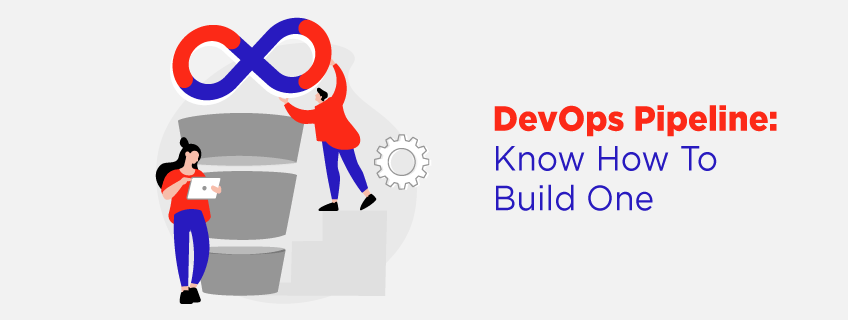How long do you think it takes for software developers to come up with new app updates?
The Google Play Store and the App Store checks for app updates every 24-48 hours.
It might be difficult to process, but this revolution has been facilitated by the introduction of DevOps.
Switching to newer app updates is definitely tougher than dropping a hat! This is why we have DevOps.
You might be thinking what exactly is Devops?
The DevOps Pipeline is an assembly of tools and software which increases productivity and reduces time.
This blog is directed towards discussing what exactly is this technology and how you can build a DevOps pipeline framework of your own.
Does this invoke your interest in learning more about this technology? If yes, then by the end of the blog you will find a list of DevOps training courses and Top DevOps courses that you can apply for.
What is the DevOps pipeline?
Have you heard of the concept of assembly line? Well, consider the DevOps Pipeline concept as more or less the same for the field of software development.
DevOps is the process which helps in combining the efforts of app development and operation teams.
The layout basically helps in reducing the time and effort for creating app updates to a minimum. This is mainly why we are able to enjoy new and improved features of our favorite apps every consecutive day or two.
It is being roughly predicted that by the year 2025, the DevOps Pipeline mechanism will hit a market value of US $ 12.85
So what does it entail? Well, the Pipeline creates a framework within which constructive integration and deployment of the app is carried out.
Keep in mind that the structural framework for every software development organization differs from one another.
That does not mean that the basic components namely, constant integration, constant development and constant deployment are different themselves.
Composition of DevOps pipeline
For building an efficient pipeline framework for DevOps dont skip out on the following components:
CI/CD framework
Thinking about shedding the workload!
The CI/CD framework is one of the most efficient servers which is capable of executing automated tests, and deploying the software within its source code repository.
The Jenkins or Travis CI framework is currently the most competent server.
Source Control Management
Deploy tools, track code changes with source control now in an efficient way!
It helps in omitting errors and resolves conflicts between repositories and contributions. Git is currently one of the most reliable ecosystems of Source Control management available out there.
Build Automation Tools
Depending on the type of programming language used in the framework, the Build Automation Tools are responsible for packaging application codes to be deployed in objects.
There are certain advanced language build tools available namely Rollup, Grunt and Babel.
These are not only capable of compiling languages but can also generate wallpapers, create libraries and perform other actions as well.
Code Testing Framework
As the name suggests, this framework is designed to recognize application errors in different phases of development.
This framework can be applied at the runtime of the application. Also, the key benefits of this is that it can be plugged into the existing CI framework in order to automate the whole process.
How to build a DevOps pipeline?
This framework is something which does not accomplish the “one size fits all” mantra. DevOps Pipeline is built according to the requirements and preferences of the company.
Here are some of the common steps that remain the same for building DevOps that every corporation has to strictly follow:
Initiate CI/CD Tool
First things first, have you got the most efficient CI/CD tools figured out for your corporation?
As we have mentioned prior to this, Jenkins is one of the most favorable CI tool provision servers available.
The customizability and community-contributed plugins are top notch for this server and fits the description for almost all the applications.
Source control management
It is often observed that companies do not follow strict boundaries between the interfaces and codes from different ecosystems.
This may lead to confusion with merging codes for apps and softwares. This is precisely why we have the Git integration tools which are projected towards creating a more compatible source control ecosystem.
Employ continuous integration
This process is also known as setting up a build server. A build server basically creates one of the most reliable and stable environments for creating distributed development projects.
In order to make sure that your code is capable of following all the parameters, use this medium for integrating and running your program.
Synthesize automated tools for testing
Now comes the interesting part! Its time to test and run your code after the configuration part has been sorted out.
Within this stage the following automated tests are carried out:
- Unit test
- Functional test
- Integration test
- Regression test
We would suggest using the TestComplete server for running your tests. It is connected with the Jenkins plugging and you can avail added benefits with this server.
Deploy for production
If you have attained this stage, you are now only required to deploy your software into production.
The fastest approach for this would be to configure the CI (Jenkins) tool to run the script for deploying your application.
If you are considering using automated deployment tools, make sure that you are fully confident that your code runs error free.
Now you have the recipe to build your own DevOps Pipeline.
But, this was the rundown version from what you can learn from an actual course. For that check out the following section.
Top DevOps online training courses
Did you know that in terms of paygrade one of the highly reputed skills in the field of software development is DevOps?
Here are some free courses to get you started:
- Continuous delivery and DevOps– This is a university level beginner course.
- DevOps culture and mindset– This will get out acquainted with the ins and out of the concept.
- Introduction to Jenkins– Learn the basic roots of Jenkins and CI tools.
Wrapping Up
Are you ready to take the first steps for developing your own software?
DevOps training courses and Top DevOps courses available online will certainly help you garner the required skills.
We understand that there is a first time for everything! But your first time is now.
by Rajat Patel
























